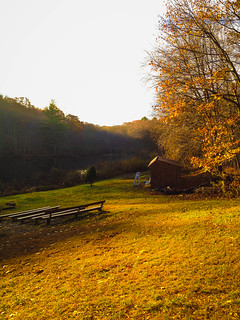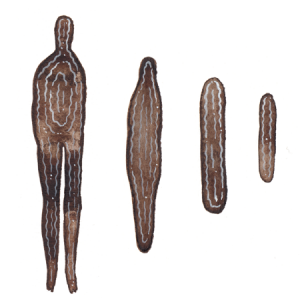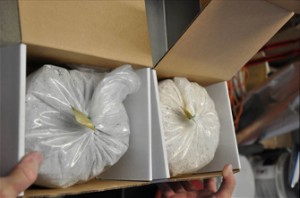Given the numerous environmental issues overshadowing the 21st century, learning how to live sustainably is a generally accepted responsibility. But what about learning how to die sustainably? Traditional burials take up valuable space. Cremation requires lots of energy, often supplied by fossil fuel, and fills the air with carbon dioxide. Alternatives do exist, but one such “green burial” option may unsettle those with a weak stomach and a distaste for science fiction. Alkaline hydrolysis, a new disposition method referred to misleadingly as “flameless” or “bio” cremation, involves no burning whatsoever; instead, the remains are dissolved in a pressurized vat of potassium hydroxide. Pictures of this are available to the public on the Bio-response Solutions website. The only residue is Bone ash, which is given to the family after all the soft tissue (muscle, skin, organs, etc.) has become a liquid and is flushed out into the water system.
You can see why this would make some people squeamish. The more sensational articles on alkaline hydrolysis describe the liquefied remains as “brown” and “syrupy”, with a consistency like motor oil. Critics with more serious concerns wonder about the potential ramifications of pouring the remains into a municipal water system. No one likes the idea of having a loved one mixed in with the drinking water. But these concerns arise more from the grisly aspect of the process than from any substantiated claim. The remains are PH neutral and, as Josh Slocum of the Funeral Consumers Alliance reminds us, more innocuous than the body fluids, waste material, and formaldehyde from more traditional embalming that we already put down the drain.
Alkaline hydrolysis, a new disposition method referred to misleadingly as “flameless” or “bio” cremation, involves no burning whatsoever; instead, the remains are dissolved in a pressurized vat of potassium hydroxide.
This disposition method is nothing new or elaborate. In fact, it merely accelerates the same decomposition that occurs in nature. Remains buried in soil, which is often already high in alkalies, decomposes by the same process at a much slower rate. Food digested in the body undergoes this process as well. Moreover, the environmental and economic advantages to alkaline hydrolysis are impossible to ignore: according to the funeral resource Village Memorial, the process “incurs 20 times less CO2 emissions vs. average cremation. It is energy efficient, using 1/10th the energy per body versus cremation. It also allows for the possible salvage of surgically-inserted foreign items in the body, such as pacemakers, replacement joints and pins, which remain sterile and intact for recovery and possible re-use. Additionally, for the budget conscious, it is 3 to 5 times less expensive than cremation.”
Yet even with the benefits of this process, it is not catching on very quickly. Only seven states have legalized it, including California in 2012. Among those who oppose the process, the Catholic Church is the most outspoken. They consider the process disrespectful to the remains and they are generally adverse to the aesthetically distressing nature of the process.

(credit: kelly.sikkema)
Part of this unease may be due to the fact that we don’t know what to call this process. “Alkaline hydrolysis” sounds too scientific for such a ceremonial process, but it is misrepresentation to call it cremation. The company Biocremation isn’t very accurate. While the impulse to use familiar terms to describe novel phenomena is an understandable approach to introducing this somewhat unpalatable process, funeral consumers should not be deceived by such language. A Scottish company has coined the term “Resomation” as an undoubtedly softer title, but as a patented process, it may not include all types of alkaline hydrolysis. Distinctions should be clear for those in grief. Then what should we call this new process? Cremation is out of the question. No satisfying name has yet been found.
Remains buried in soil, which is often already high in alkalies, decomposes by the same process at a much slower rate. Food digested in the body undergoes this process as well.
But resistance is still productive, since it creates a space in which to question new technologies rather than accept them wholesale. For example, think about which resources go into producing the chemicals that are used in Resomation. Even if it has a smaller carbon footprint than cremation, it can’t be completely “green”. It is organizations such as the Catholic Church that root us in tradition and draw our attention to what may be lost or at risk with the adoption of new technology. The resolution of these issues can keep us responsible and accountable as we explore better ways to deal with end of life remains.
Is Resomation the future of burial practice? Will we come to accept the process? If so, will it make us loose any sensitivity for how we view the human body? We look forward to your comments below.
More from Something Special:
- Corruption and Incompetence in the Coroner’s Office
- LSD Research Makes Biggest Headway in 40 Years
- A No-Fear Approach to Death

 Alkaline Hydrolysis: Green Burial or Scientific Nightmare?
Alkaline Hydrolysis: Green Burial or Scientific Nightmare?






 The Healing Sound of Singing Bowls
The Healing Sound of Singing Bowls
 “Summons” by Aurora Levins Morales
“Summons” by Aurora Levins Morales














